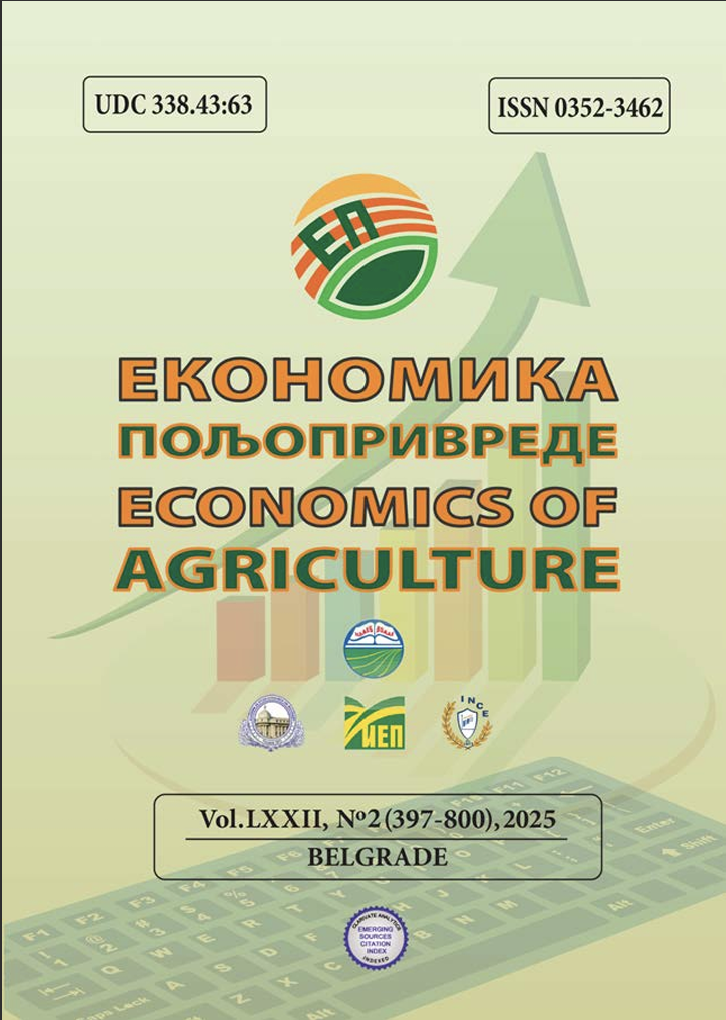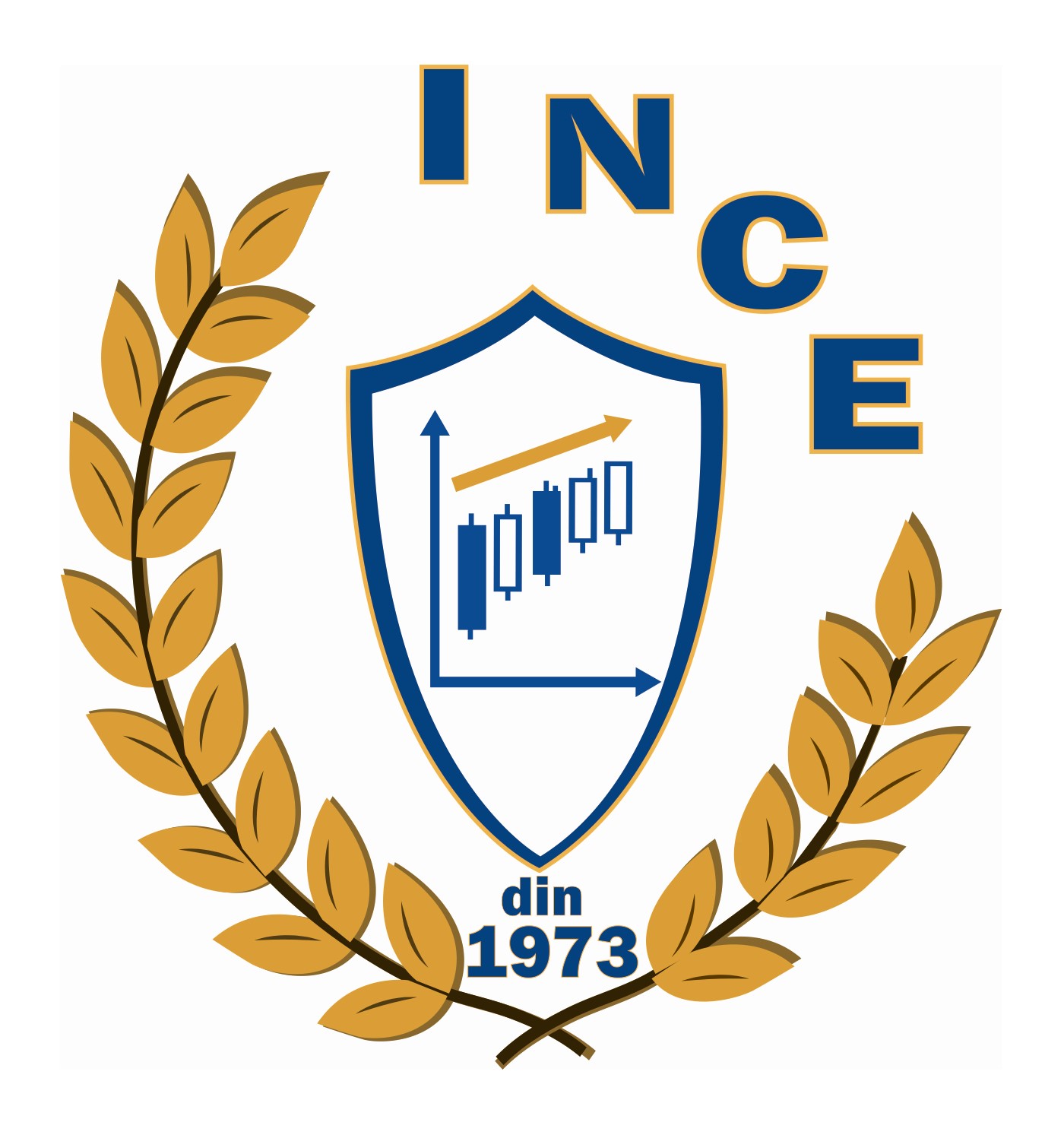THE FUTURE OF SERBIAN FRUIT EXPORTS TO EGYPT: OPPORTUNITIES UNDER THE NEW FREE TRADE AGREEMENT
DOI:
https://doi.org/10.59267/ekoPolj2502455SKeywords:
Serbia, Egypt, Free trade agrrement, Agri-export simulationAbstract
This study examines the potential impact of the Free Trade Agreement (FTA) between Serbia and Egypt on Serbian fruit exports. It identifies fruit products with strong trade complementarity to Egypt’s import needs and projects export growth from tariff reductions. Using Revealed Comparative Advantage (RCA) and the Michaely Trade Complementarity Index (TCI), the analysis highlights Serbia’s globally competitive fruit products and their alignment with Egypt’s demand. A simulation model, incorporating Egypt’s demand elasticity and anticipated price reductions, predicts significant growth for products like fresh apples, plums, and dried apricots, while frozen fruits, despite high RCA, show limited prospects. The findings offer actionable recommendations for expanding production in high-demand sectors, leveraging Serbia’s comparative advantages, and diversifying exports to maximize FTA benefits. This study provides a strategic framework for enhancing Serbia’s fruit trade with Egypt, supporting informed policymaking and stakeholder decisions in an evolving global trade environment.
Downloads
References
Ahmed, A., Nazeer, N., Zahid, G., & Nawaz, F. (2023). Does revealed comparative advantage matter in the gravity of FTAs? Journal of International Logistics and Trade, 21(2), 84–107. https://doi.org/10.1108/JILT-06-2022-0018
Balassa, B. (1965). Trade liberalisation and “revealed” comparative advantage. The Manchester School of Economics.
Baldwin, R. (2011). 21st Century Regionalism: Filling the gap between 21stcentury trade and 20th-century trade rules. Centre for Economic Policy Research (CEPR) Policy Insight No. 56. Retrieved from https://cepr.org/publications/policyinsights/21st-century-regionalism-filling-gap-between-21st-century-trade-and-20th (September 21, 2024)
Banterle, A., & Carraresi, L. (2007). Competitive performance analysis and European Union trade: The case of the agri-food sector. Food Economics – Acta Agriculturae Scandinavica, 4(3), 159–172.
Bhagwati, J., & Panagariya, A. (1996). The economics of preferential trade agreements. Washington, DC: AEI Press.
Bojnec, Š., & Fertő, I. (2008). European enlargement and agri-food exports of Central European and Balkan countries. Post-Communist Economies, 20(1), 1–16.
Fertő, I., & Hubbard, L. J. (2003). Revealed comparative advantage and competitiveness in Hungarian agri-food sectors. World Economy, 26(2), 247–259.
Finger, J. M., & Kreinin, M. E. (1979). A measure of export similarity and its possible uses. The Economic Journal, 89, 905–912.
Hoang, V. (2018). Assessing the agricultural trade complementarity of the Association of Southeast Asian Nations countries. Agricultural Economics – Czech, 64(10), 464–475. https://doi.org/10.17221/253/2017-AGRICECON
Irwin, D. A. (2008). Free trade under fire. Princeton, NJ: Princeton University Press.
ITC. (2024a). Market Access Map. Retrieved from https://www.macmap.org/ (September 28, 2024)
ITC. (2024b). Trade Map. Retrieved from https://www.trademap.org (September 28, 2024)
Kowalski, P., & Shepherd, B. (2006). South-South trade in goods. OECD Trade Policy Working Paper No. 40. OECD, Paris.
Lee, P. T.-W., Lee, T. C., & Yang, T.-H. (2013). Korea-ASEAN Free Trade Agreement: The implications on seaborne trade volume and maritime logistics policy development in Korea. Journal of International Logistics and Trade, 11(1),3–26.
Lee, T. C., & Lee, P. T.-W. (2012). South-South trade liberalization and shipping geography: A case study on India, Brazil, and South Africa. International Journal of Shipping and Transport Logistics, 4(4), 323–338. https://doi.org/10.1504/IJSTL.2012.049308
Linnemann, H., & Beers, C. V. (1998). Measures of export-import similarity and the Linder hypothesis once again. Review of World Economics, 124, 445–457.
Lukač-Bulatović, M., Vukoje, V., & Milić, D. (2017). Economic indicators of production of important fruit species in Vojvodina. Ekonomika poljoprivrede, 64(3), 973-985. [in Serbian: Lukač-Bulatović, M., Vukoje, V., & Milić, D. (2017). Ekonomski indikatori proizvodnje važnijih voćnih vrsta u Vojvodini]-
Matkovski, B., Erceg, V., Đokić, D., & Kleut, Ž. (2018). Potentials of berry fruit export from Serbia. Agroekonomika, 47(78), 13-21. [in Serbian: Matkovski, B., Erceg, V., Đokić, D., & Kleut, Ž. (2018). Potencijali izvoza jagodastog voća iz Srbije].
Mayda, A. M., & Steinberg, C. (2009). Do South-South trade agreements increase trade? Commodity-level evidence from COMESA. Canadian Journal of Economics, 42(4), 1361–1389.
Melchior, A. (2018). Free trade agreements and globalisation. Palgrave Macmillan, Switzerland. https://doi.org/10.1007/978-3-319-92834-0
Michaely, M. (1996). Trade preferential agreements in Latin America: An ex-ante assessment. World Bank Policy Research Working Paper No. 1583.
Ministry of Agriculture of the RS. (2022). Egypt is interested in importing wheat and fruit from Serbia. Announcement 20.12.2022. Retrieved from http://www.minpolj.gov.rs/egipat-zainteresovan-za-uvoz-psenice-i-voca-iz-srbije/?script=lat(October 18, 2024)
Osman, R., Ferrari, E., Mainar Causape, A., & Jiménez Calvo, S. (2021). Can the Nile generate output, income, and employment in Egypt? A mixed multiplier analysis. New Medit, 20(1), 3–17. https://doi.org/10.30682/nm2101a
Plummer, M., Cheong, D., & Hamanaka, S. (2010). Methodology for impact assessment of free trade agreements. Asian Development Bank.
Sanguinetti, P., Siedschlag, I., & Martincus, C. V. (2010). The impact of SouthSouth preferential trade agreements on industrial development: An empirical test. Journal of Economic Integration, 25(1), 69–104.
Serin, V., & Civan, A. (2008). Revealed comparative advantage and competitiveness: A case study for Turkey towards the EU. Journal of Economic and Social Research, 10(2), 25–41.
Stanojević, N. (2022). Assessing Serbia’s cereals export to the Middle East markets. New Medit, 21(2). https://doi.org/10.30682/nm2202a
Stankov, B., Roganović, M. & Mihajlović, M. (2023). Researching trends and forecasting future values of fruit exports and imports of the republic of Serbia. Ekonomika poljoprivrede, 70(1), 29-46.
Tanjug. (2024). Serbia and Egypt signed the Free Trade Agreement and 10 more cooperation documents. 13.07.2024. Retrieved from https://www.tanjug.rs/svet/politika/99817/vucic-sa-al-sisijem-o-geopolitickim-pitanjima-uskoro-zajednickavojna-vezba/vest (October 18, 2024)
Viner, J. (1950). The customs union issue. Washington, DC: Carnegie Endowment for International Peace.
Wani, N. U. H. (2024). Afghanistan’s regional and bilateral free trade agreements: An evaluation of trade effects, diversion, and creation. In Policy solutions for economic growth in a developing country (pp. 155–179). Emerald Publishing Limited. https://doi.org/10.1108/978-1-83753-430-220241008
Downloads
Published
How to Cite
Issue
Section
License
Copyright (c) 2025 Ekonomika poljoprivrede

This work is licensed under a Creative Commons Attribution-ShareAlike 4.0 International License.









